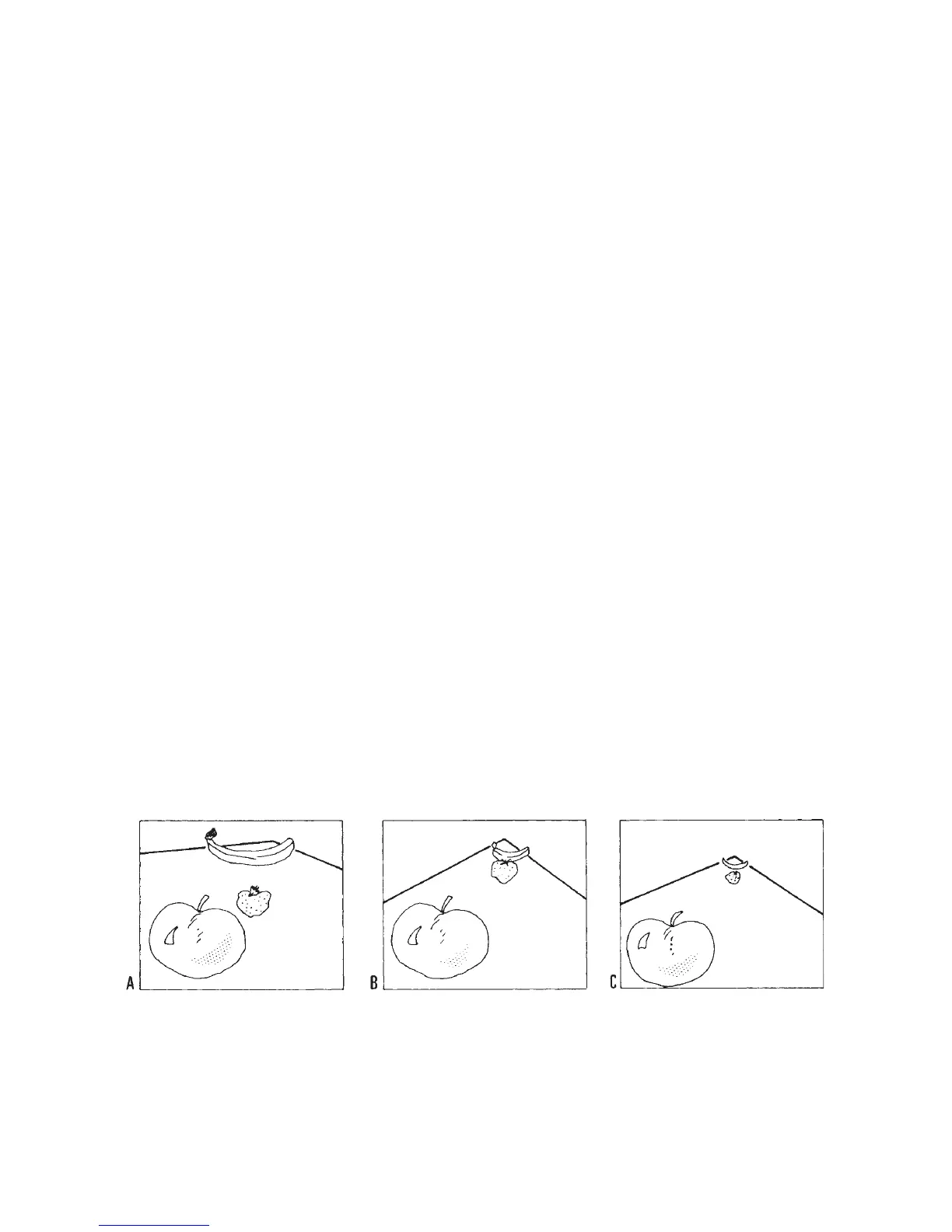Lens Characteristics and Specifi cations 263
lenses by photographing from longer or shorter distances, and that these images will be
recorded on the sensor or on fi lm in a different fashion.
CHANGING PERSPECTIVE
Perspective is defi ned as the size relationship between foreground and background and dif-
ferent focal length lenses can be used to do just that (see Figures 14-24, 14-25, and 14-26).
Visualize a scene with a birch tree in the foreground and a mountain range in the back-
ground in a location where you can photograph the scene from different distances. You have
now different options: with a wide angle lens of perhaps a 50 mm focal length from a close
distance of 10 feet (3 m) or with a telephoto lens perhaps of 250 mm focal length, from a
longer distance of 50 feet (15 m). The size of the birch tree is identical in both images, but
the background subjects are not. In the wide angle scene, the mountains appear small, even
smaller than we see them with our eyes. In the telephoto shot, the distant mountains are fi ve
times larger and appear more majestic and much larger than seen with our eyes. The same
picture taken with a standard 80 mm lens would show the scene more or less as seen with
our eyes and that is why it is called a normal or standard lens.
There are situations when, for good reason, you want to see the image in the “standard”
fashion. Many news and legal pictures must show a scene as seen by the naked eye and must
therefore be made with a standard lens. Be aware that these standard images may likely look
ordinary because it is the image that everybody sees with the naked eye. But by changing
perspective with shorter or longer focal length lenses you frequently create more fascinating
images. It pays to consider this possibility before you press the release, especially since it is
the simplest approach to record any three-dimensional scene in a different fashion.
Since different focal length lenses are necessary for this approach, it is usually assumed
that the focal length of the lens determines perspective. Strictly speaking that is incorrect.
Perspective is really determined by the subject distance. The different focal length lenses are
Figure 14-24 Image perspective. With a telephoto lens used at a longer distance (A), the pieces
of fruit appear close to each other, with the banana in the back practically as large as the
apple in the front. With the standard lens (B), the relative positions are as seen by our eyes.
With the wide angle lens used at a close distance (C), the banana is much smaller than the
apple and appears to be much farther away.

